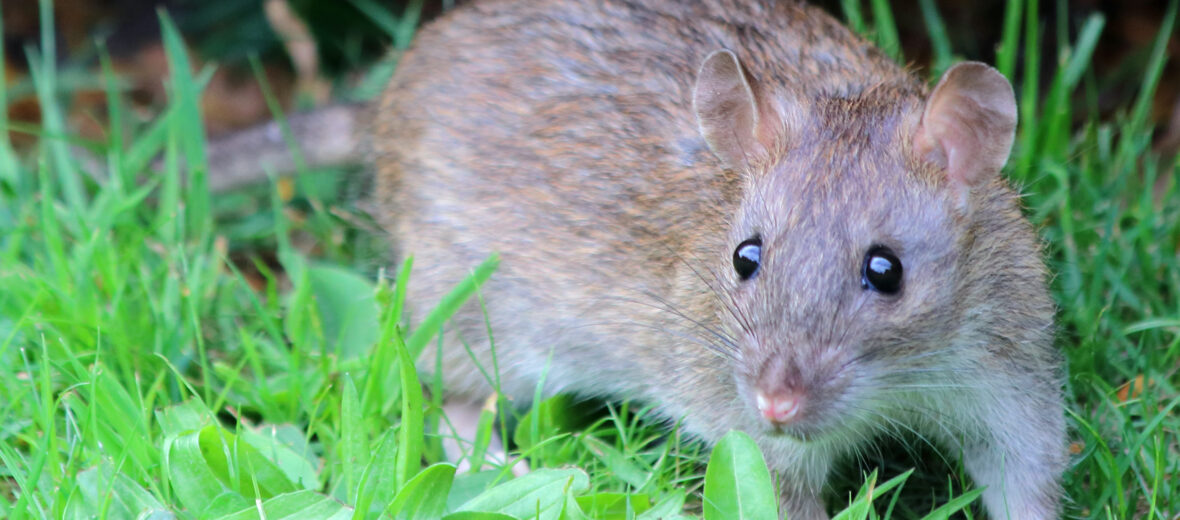
The brown rat, aka common rat, sewer rat, water rat, wharf rat, house rat, or Norway rat, can be found on every continent, sans Antarctica. They originated in southern China, but have since been introduced around the world. Much to our dismay. In their native habitat they prefer forests and brushy areas. However, they are extremely adaptable and can now be found in woodlands, open fields, basements, garbage dumps, and sewers. Due to their invasive nature and massive numbers, these rats are listed as Least Concern by the IUCN. To put their numbers into perspective, it is estimated that there are approximately 250,000 brown rats in New York alone!
First the Stats…
Scientific name: Rattus norvegicus
Weight: Up to 1.1 lbs.
Length: Up to 19.7 inches, plus up to a 9.8 inch tail
Lifespan: Up to 4 years
Now on to the Facts!
1.) These rats are nocturnal (active at night).
2.) Generally speaking, rats aren’t big fans of water. But these rats are actually good swimmers.
3.) Being highly social, these rodents form groups based on a dominance hierarchy.
4.) The social aspect stops within their own group though, as these rats are highly aggressive towards members of outside groups.
5.) Each individual group is led by a dominant or alpha male.
But wait, there’s more on the brown rat!
6.) A group of rats is called a colony, horde, mischief, pack, plague, or swarm.
7.) The underground burrows have around 2 exits as well as chambers for food storage and nursing.
Did you know…?
Brown rats have been known to spread Leptospirosis (Weil’s disease), Listeria, Salmonella, Toxoplasma gondii, Hantavirus, and Yersinia pestis (which is spread by fleas). The other diseases are typically spread by urine contact.
8.) Around the burrow are several scent marked paths that lead to food and allow for their retreat from predators.
9.) Brown rats feed on seeds, nuts, fruits, and grains. They also prey on mice, young rabbits, birds, eggs, fish, and insects. Remarkably, these rodents have even been known to take down poultry and small lambs! On occasions, they have been documented eating paper, soap, beeswax, and carrion (dead animals).
10.) Cats, owls, and weasels all prey on brown rats.
But wait, there’s still more on the brown rat!
11.) The brown rat is polygynandrous (promiscuous – both males and females have multiple partners.)
12.) They’re cooperative breeders that can breed up to 7 times per year.
Did you know…?
Rats can spend up to 76% of the day sleeping.
13.) Females undergo up to a 24 day gestation (pregnancy) that yields up to 8 pups.
14.) Pups are independent at about 4 weeks.
15.) Collective nursing is practiced, which means that offspring of different females often dwell together in the same nest and are cared for by a variety of adults.
Now a Short Brown Rat Video!
Be sure to share & comment below! Also, check out the Critter Science YouTube channel. Videos added frequently!
Want to suggest a critter for me to write about? Let me know here.



